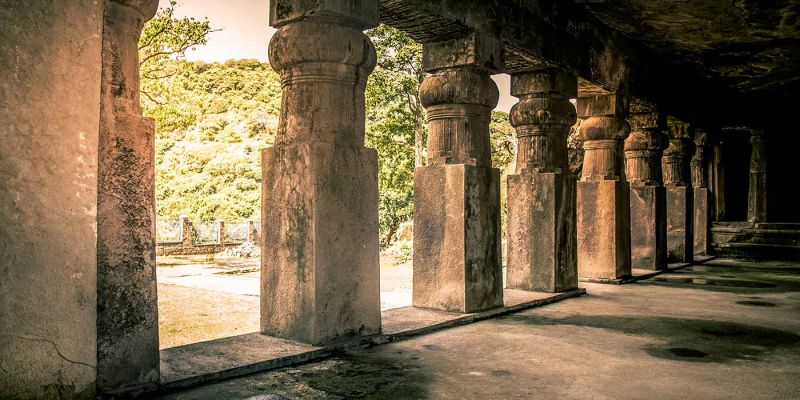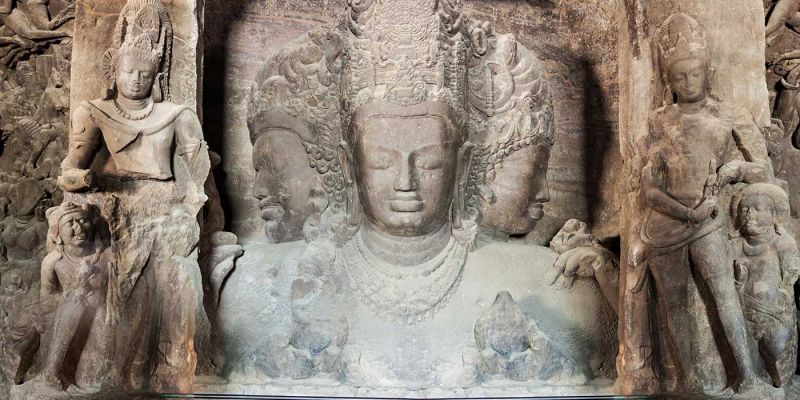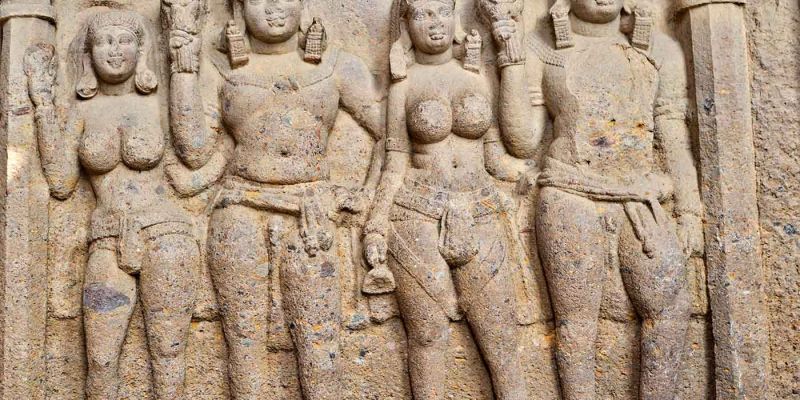Elephanta Caves
Elephanta Caves, located in Elephanta Island that offers the best escape from the seething claustrophobia of the city. Read more about the most popular attractions in Maharashtra.
The Elephanta collapses Mumbai are a famous and progressively open other option. These stone cut cavern sanctuaries were recorded as an UNESCO World Heritage Site in 1987. In addition to the fact that they are viewed as one of the most critical instances of Indian model workmanship, but at the same time they're one of the most significant assortments devoted to Lord Shiva. This total manual for the Elephanta Caves will assist you with arranging your outing there. The caverns are situated around 6 miles (10 kilometers) east of Mumbai, on the island of Gharapuri.
History
An absence of archeological proof methods it's dubious who precisely made the Elephanta Caves or when. In light of other comparable collapses the area, the Elephanta Caves are broadly thought to have been developed at some point around the sixth century AD, either by lord Krishnaraja of the Kalachuri Dynasty or by Chalukya Dynasty rulers. These administrations were set up in the district after the decay of the Vakataka Dynasty in the sixth century. The island was called Elephanta Island by the Portuguese in the sixteenth century after they gained it from the Gujarat Sultanate and found a sizeable stone cut stone elephant statue there (the figure is presently in plain view outside the Bhau Daji Lad Museum in Mumbai). When the British dealt with Bombay in the seventeenth century, the caverns had gotten very harmed. Huge segments had been either vandalized or destroyed by characteristic powers. Be that as it may, as Bombay developed, Hindus came back to revere at the caverns. The caverns weren't reestablished until the late 1970s, however, when the Indian government chose to make them a vacationer site. They're right now oversaw by the Archeological Survey of India.

Structure
The Great Cave, also known as Cave 1, was the haven of worship of Hindu deities. This beautiful cave, situated in hillside and faces the ocean, resembles the 8th century Kailash Temple in Ellora Caves. This cave is full with enormous, beautiful sculptures. The main chamber, mandapa, is supported by rows of impressive pillars. There are so many carvings with Shiva that cover each wall in the mandapa, each one is more than 5m high. The most famous sculpture in mandapa is Trimurti, which has three faces of Shiva. Trimurti resembles a Trinity of Brahma, Vishnu and Shiva, royal insignia of Rashtrakutas. The right face represents Shiva as a young person, signifying life. The right half of the face resembles Lord Brahma, the female form of Shiva. Whereas the left half face is of a young man, having moustache and displaying anger, signifying Shiva the destroyer. The central face is in a meditative pose, signifying Shiva praying for the protection of humanity.

Cave 2 is located to the south-east from the Great Cave. The portal of the cave is destroyed, interior is damaged by water. It has a chapel in the northern end. The irregular chapel is supported by four eight-cornered columns, besides two demi-columns. There are remains of sculptures. However, previous rich artwork disappeared. Cave 3 lies at the south. It is in a worse condition, as it is damaged by stagnant water. The pillars in front of the rooms have been preserved. Across the ravine top from the Great Cave, there is a huge cave chamber, known as Sitabai’s Temple. The portico of this chamber has four pillars and two pilasters. Cave 5 is situated to the north from Sitabai’s cave. It has been abandoned soon after the start of construction.
As for the Buddhist caves, the 173 m high Stupa Hill is situated in the eastern part of the island. The hill comprises of two caves with Buddhist monuments that date back to the 3rd century AD. One of the two Buddhist caves is not complete. The other cave contains a stupa made in bricks. The island contains other remains of buildings and artwork, as this was a place for capital city in ancient times.
Step by Step Instructions to Get There
Elephanta Island is come to in about an hour by pontoon from the Gateway of India in Colaba. The vessels leave each half hour or so from 9 a.m. to 2 p.m. There are two choices: extravagance or common. The more up to date extravagance pontoons are not really lavish, yet they're more agreeable than the standard ones. Hope to pay about 2.79 $ (200 rupees) per individual for the full circle. Tickets can be acquired from the official booking office counter close to the flight point. For 10 rupees extra, payable on board the pontoon, you can sit on the upper deck. It's prescribed for the best perspectives. When you land at the pier on the island, you'll have to stroll up around 120 stages to arrive at the passageway of the caverns. On the other hand, it's conceivable to take the toy prepare or be carried on a seat attached to two wooden shafts. Climbing a few stairs is unavoidable, however, so think about this.
Note: The best time to visit Elephanta caves is from October and February.
The most effective method to Visit
The caverns are open from 9 a.m. to 5 p.m., every day with the exception of Mondays. In a perfect world, go promptly toward the beginning of the day to beat the groups and warmth. Vessel administrations are suspended during the storm season from June to August. Passage tickets cost 600 rupees for outsiders and 40 rupees for Indians. They can be bought from the counter at the passage to the caverns. There's additionally a 10 rupee improvement charge. The stairway up to the caverns is fixed with keepsake and tidbit slows down. Do load up on anything you have to eat and drink. Notwithstanding, be careful with the troublesome monkeys that watch the region, and keep any consumables away from them. They're known to be forceful and will take stuff.
You may decide to eat in the administration run eatery close to the cavern entrance. Traveler guides are accessible for procure at the caverns, and they'll likely move toward you. You needn't bother with one, however. It's adequate to purchase an economical duplicate of A Guide to the Elephanta Caves by Pramod Chandra. You can likewise stop by the little historical center situated after the ticket counter to get a review of the historical backdrop of the caverns. Taking a voyage through Elephanta Island is an alternative. Swadesee offers this fascinating Elephanta Island Experience, which covers the remainder of the island also. Mumbai Magic, Breakaway, and Reality Tours and Travel are suggested as well.
What to See

There are seven collapses two gatherings on two unique slopes. Caverns 1-5 are Hindu caverns committed to Lord Shiva on Gun Hill (likewise called Cannon Hill). Caverns 6 and 7 are Buddhist caverns, arranged further away on the island's eastern Stupa Hill. Not many individuals visit them. They're not in great condition, and one is unfinished. The primary fascination is Cave 1, and it's the main cavern you'll run over. It's troublesome not to be wowed by the marvelous carvings of Lord Shiva in 10 unique symbols. The most amazing one is a 7 meter Trimurti—a three-colored Shiva in his job of the destroyer, maker and preserver of the universe. This cavern is regularly compared to Dhumar Lena Cave 29 at Ellora. There's less to find in Caves 2-4, as they're practically without carvings. On the off chance that you climb the disintegrating slender way to one side of the passageway to the caverns, it will take you to the highest point of the slope where there are two huge guns. The slope likewise gives enrapturing sees over the island.
